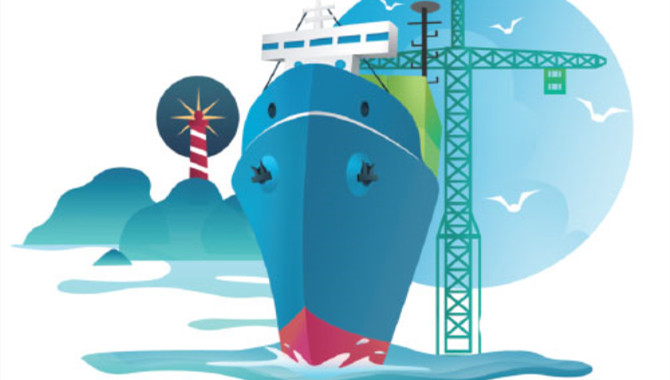
As platforms for accelerating regional integration, more attention must be given to quality of Belt and Road port projects
Ports are an integral part of the Belt and Road connectivity. At present, a pattern featuring improved local infrastructure supported by new industrial parks and free trade zones around ports has come into being along the Belt and Road routes. In Southeast Asia, South Asia, Africa, and Europe, this pattern, built by Chinese companies, facilitates logistics and the free flow of goods. As a result, trade has been promoted both on a regional and a global scale.
The importance of ports in promoting trade along the Belt and Road routes is testified to in a series of Chinese government documents, including the 2015 Action Plan on the Belt and Road Initiative and the 2017 Vision for Maritime Cooperation under the Belt and Road Initiative, which make it clear that building ports overseas was a goal.
Actually, Chinese companies began investing in overseas ports before the Belt and Road Initiative was proposed in 2013. But after the proposals for the Silk Road Economic Belt and the 21st Century Maritime Silk Road were made, there was a surge both in the number of Chinese investors and an improvement in the scale and depth of the investment.
Spurred by favorable policies, at the end of 2018, Chinese companies were involved in the construction and operation of 42 ports in 34 countries, and the number is growing. At the Second Belt and Road Forum for International Cooperation held at the end of April this year, the topic of overseas port investment attracted much attention and brought about more new achievements.
For example, a memorandum of understanding on strategic cooperation was signed between the Liangjiang New Area of Chongqing and the Port of Duisburg in Germany. The two parties aim to work hand-in-hand in the planning and operation of logistics and hubs of communications in both areas.
A framework agreement for strategic cooperation to revamp the old port in the downtown of Djibouti City was signed by China Merchants Shekou Industrial Zone Holdings Co Ltd, China Merchants Port Holdings Co Ltd and the Great Horn Investment Holdings of Djibouti.
Zhejiang Seaport signed an MOU with PT Pelindo I in Indonesia, in which they agreed to codevelop the Kuala Tanjung Port, and Ningbo Zhoushan Port Company signed an MOU on long-term friendly cooperation with PT Pelindo II in Indonesia.
But on the other hand, problems in some China-invested ports are also becoming prominent, some of which have even misled the overall evaluation of the Belt and Road Initiative. A report on the strategic analysis of China's overseas port program was released by Grandview Institute on April 11, which surveyed 42 China-invested overseas port projects including the Hambantota Deep Sea Port, Gwadar Port, Djibouti Port, Port Darwin and the Port of Piraeus, and assessed the problems and risks during the investment, construction and operation stages.
The report noted that external risks, especially security issues and cultural conflicts, need to be handled properly so Chinese workers can cooperate with the locals.
Besides, problems around maintenance and operations have also arisen from time to time. For example, the classic model of Port-Park-City, which is widely used in China, cannot be simply copied and pasted overseas. Other problems such as the unsustainability of a project due to too much debt or the environmental issues caused by the construction also influence local people's understanding of the projects.
Now, as the Belt and Road Initiative has entered a new stage, all parties have new expectations and higher requirements for port cooperation. The joint communique issued at the Second Belt and Road Forum on International Cooperation says: "We support the development of a sustainable blue economy and call for further strengthening of maritime connectivity and international maritime cooperation, including cooperation among ports and in shipping industries, while managing marine and coastal ecosystems in a sustainable manner."
The key to achieving this goal lies in the following aspects.
First, summarizing China's experiences in port development so far and adjusting its policies to local conditions. In the new era, ports act as a platform for opening logistics channels, reducing transaction costs and accelerating regional economic integration. Through the construction and operation of ports, China should empower the local people to develop their economy.
Second, we should pay more attention to the quality of the projects. Since the inception of the Belt and Road Initiative, some Chinese enterprises advanced in a rash manner in order to get the right to invest and operate, but they underestimated the debt risks, thus leaving many operational problems. In the next stage, the relationship between strategic investment and business operation must be well handled to improve the sustainability of the projects.
Third, more attention should be paid to the localized commercial operation of the ports. We need to strengthen ties with local organizations and social institutions, involve more local workers in the projects, absorb more local talent at the managerial level, and gain the support and trust of local people through charity or other social welfare work, as an effort to reduce our investment risk and facilitate China's trade and commerce there.
The author is deputy director of the Center for Policy Studies at Grandview Institute. The author contributed this article to China Watch, a think tank powered by China Daily. The views do not necessarily reflect those of China Daily.
Source:chinadaily
The opinions expressed herein are the author's and not necessarily those of The Xinde Marine News.
Please Contact Us at:
admin@xindemarine.com

